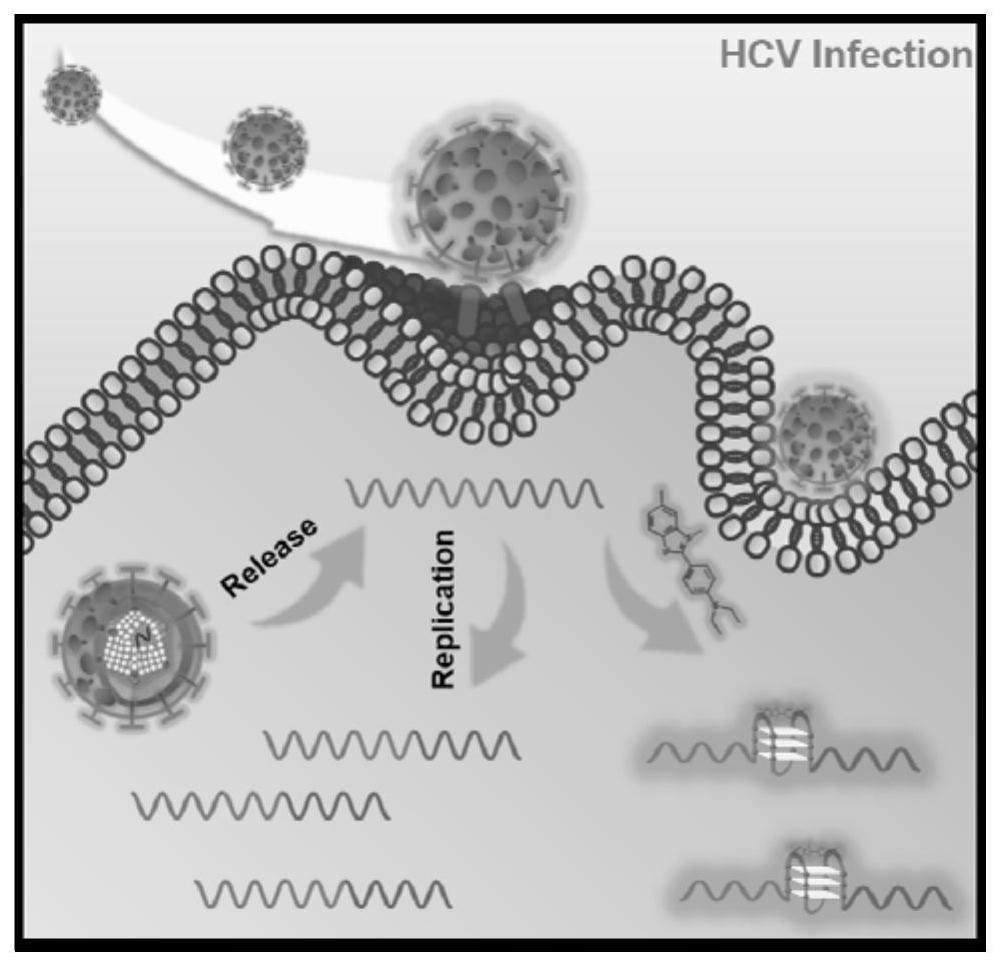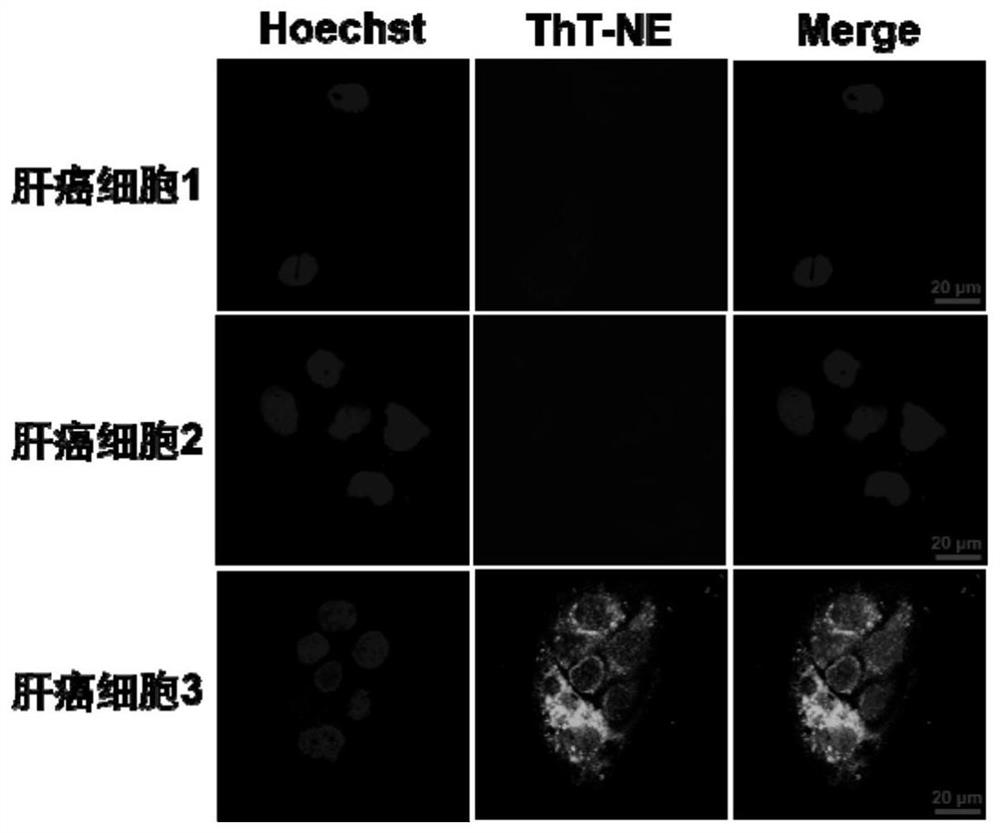G-quadruplex fluorescent dye and method based on highly conserved region G-quadruplex structure of HCV genome
A fluorescent dye and quadruplex technology, which is applied in the field of G-quadruplex fluorescent dyes based on the G-quadruplex structure in the highly conserved region of the HCV genome, can solve the problem of unfavorable G-quadruplex detection and the inability to truly reflect HCV Infection and replication, low transmembrane efficiency, etc.
- Summary
- Abstract
- Description
- Claims
- Application Information
AI Technical Summary
Problems solved by technology
Method used
Image
Examples
Embodiment 1
[0028] The structure of the G-quadruplex fluorescent dye is shown in formula (I):
[0029]
Embodiment 2
[0031] The preparation method of the G-quadruplex fluorescent dye described in embodiment 1 comprises the following steps (the synthesis route is shown in figure 2 ):
[0032] (1) Synthesis of intermediate 1: 2-methylbenzothiazol-6-amine (10mM, 1.64g) was used as a raw material, DMF was used as a solvent, methyl iodide (50mM, 7.09g) was added, and refluxed at 80 degrees for 18 hours, After the reaction was cooled to room temperature, the reaction mixture was suction-filtered, rinsed with cold ether (50-150 mL), the precipitate was collected, and vacuum-dried to obtain the product 2-amino-3,6-dimethylbenzothiazol-3-ium (intermediate 1, 2.44g, yield 80%);
[0033] (2) Synthesis of Intermediate 2: Intermediate 1 (5mM, 1.53g), potassium hydroxide aqueous solution (10M, 29g), ethylene glycol 6-12mL was added to a 100mL round-bottomed flask to react for 18h at reflux temperature, and the reaction was cooled to After room temperature, the mixture was poured into a beaker containin...
Embodiment 3
[0036] The detection method based on the HCV infection of the G-quadruplex fluorescent dye described in Example 1 is: preferably contain the live cell system (cell sample number is 5 * 10) that replicates active HCV infection 4 each, the reaction system was 100 μL) were co-incubated with ThT-NE, washed twice with phosphate-buffered saline, 5 min each time, and used a confocal laser fluorescence microscope (the parameter 403nm channel was used for living cell nuclear dye Hoechst imaging, and the 488nm channel was used for live cell nuclear dye Hoechst imaging). Cellular HCV RNA combined with ThT-NE imaging) is detected, the incubation time is 10-30 min, and the reaction temperature is 20-40°C.
[0037] Wherein, the dosage of the ThT-NE dye is 6.97-34.75ng; the excitation wavelength of the selected fluorescence microscope is blue light 460-488nm.
[0038] Test results:
[0039] The degree of infection is reflected by the imaging detection of actively replicating HCV-infected ce...
PUM
 Login to View More
Login to View More Abstract
Description
Claims
Application Information
 Login to View More
Login to View More - R&D
- Intellectual Property
- Life Sciences
- Materials
- Tech Scout
- Unparalleled Data Quality
- Higher Quality Content
- 60% Fewer Hallucinations
Browse by: Latest US Patents, China's latest patents, Technical Efficacy Thesaurus, Application Domain, Technology Topic, Popular Technical Reports.
© 2025 PatSnap. All rights reserved.Legal|Privacy policy|Modern Slavery Act Transparency Statement|Sitemap|About US| Contact US: help@patsnap.com



